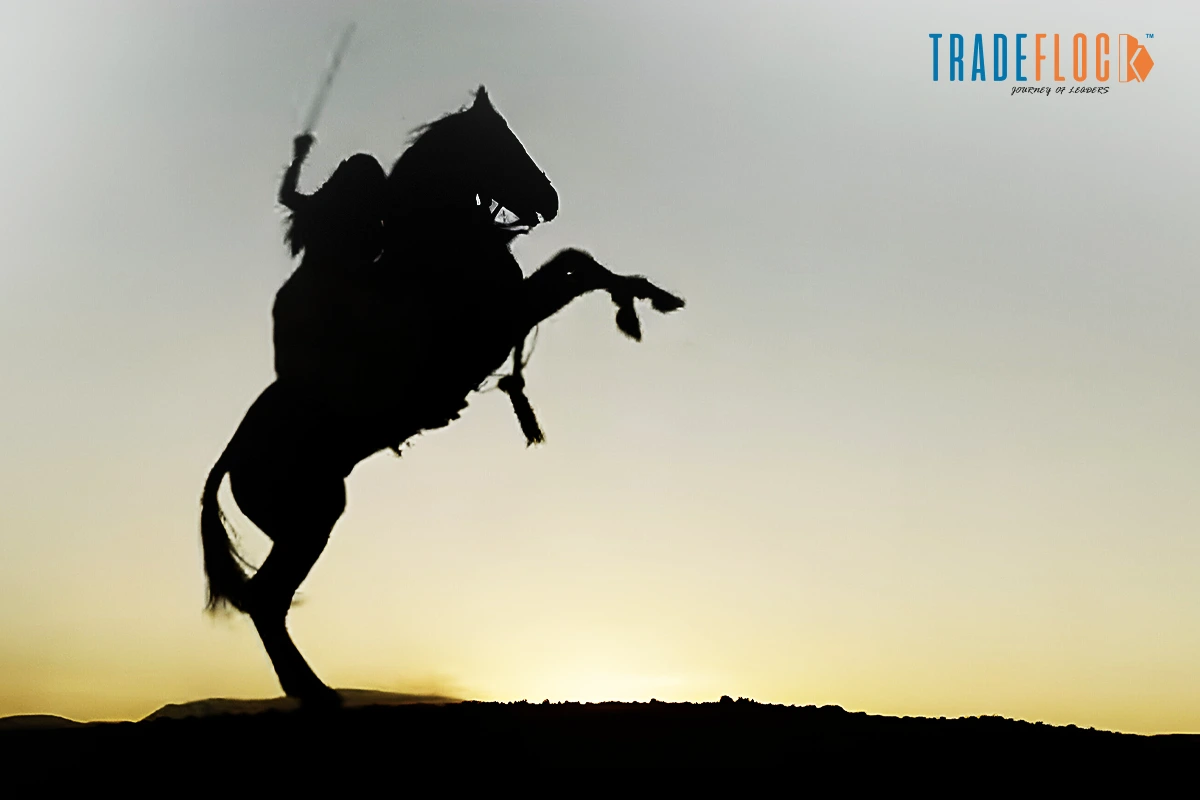The Indian subcontinent saw the defeat of one of its fiercest and legendary freedom fighters, Rani Lakshmibai of Jhansi, on 18 June 1858. Her demise in battle during the Indian Rebellion of 1857 not only signified the culmination of a fierce resistance by the state of Jhansi but also the birth of a national heroine who would inspire generations of Indians in their struggle against colonial rule.
Riding on a horse, brandishing a sword, dressed in warrior clothes, Rani Lakshmibai did not die as a queen in her court but as a soldier on the battlefield. Her tale of bravery, of strategy and sacrifice became ingrained in the minds of a nation that was longing to be free.
Table of Contents
Becoming A Queen
She was born Manikarnika Tambe in 1828 in Varanasi into a Brahmin family that supported education and the martial arts. She was raised on horsemanship, sword-fighting and archery skills which would not only help her in life but in deciding her fate as well.
When she was 14 years old, she got married to Maharaja Gangadhar Rao who was the ruler of the princely state of Jhansi. At her marriage, she was changed to Lakshmibai. Soon before the death of the king, the couple had adopted a son, Damodar Rao. However, the British East India Company did not accept the adopted heir, and referred to the Doctrine of Lapse, the policy according to which the Indian states without biological male heirs were annexed.
The Breaking of Rebellion
A festering frustration within India erupted into open rebellion in the year 1857. Religious insensitivity, unfair treatment, and foreign rule infuriated Indian soldiers in the British army who rebelled against colonial forces in what was later termed the First War of Indian Independence.
By the time the rebellion came to Jhansi, Lakshmibai was at first reluctant to participate in it as she wanted a peaceful solution through diplomacy. However, the British treachery, killing of civilians by local British officers and the rising strength of the uprising made her do so.
Soon the Rani was in control of the defense of Jhansi. Within a brief period, she had turned a reluctant ruler into a revolutionary commander, she organized the army, she strengthened the city, and she trained soldiers including women. Jhansi turned into a strong rebel under her leadership.
The Siege of Jhansi
British army led by Sir Hugh Rose besieged Jhansi in March 1858. In rebellion, the Rani would not give up. She was able to defend against the siege with two weeks delay with few resources and manpower. She was at the head of her troops, riding along the walls, examining the defenses and encouraging citizens.
The British troops finally rushed the city. Jhansi Ki Rani though lost, Lakshmibai made an incredible escape on horseback, with her son bound to her back, as the enemy fired at her–an exploit that was to achieve the stuff of legend.
The Last Battle of Gwalior
After escaping Jhansi, Rani Lakshmibai eluded and united with other rebel leaders, such as Tantia Tope and Rao Sahib. They jointly took the strategic city of Gwalior, a key British base in central India. This win provided the rebellion with a short revival, and Lakshmibai stated that she would never yield to the British.
However, soon British troops recovered and counter-attacked. The Rani Lakshmibai, aged only 29 years, was mortally wounded in the thick of the battle, near Kotah-ki-Serai, on 18 June 1858, as she valiantly fought. Accounts say she disguised herself as a soldier to evade capture and fought to the end with great valour. Her body was allegedly cremated by her loyal followers within a short time to ensure that the British would not get hold of her body.
Legacy of a Warrior
Even in defeat, the British officers were impressed by the courage of the queen. Of her Sir Hugh Rose has written:
The Rani was outstanding in beauty, brains and courage. Of all Indian leaders she was the most dangerous.
Even though the rebellion of 1857 was suppressed, the death of Lakshmibai proved to be an inspiration to Indian nationalists. Poems, plays and oral traditions were used to preserve her story. The Hindi poem Jhansi ki Rani by Subhadra Kumari Chauhan made her immortal with the following line:
Khoob ladi mardani, Jhansi wali Rani thi!
Like a man did she fight (she was the Queen of Jhansi!)
Her defiance was not merely a political statement of sovereignty but a social norm. Breaking the gender role expectations of the 19th century, she became one of the first iconic representatives of empowered Indian womanhood as a woman who led men into war.
Rani Lakshmibai in Modern India
Today, Rani Lakshmibai is celebrated as one of India’s foremost freedom fighters. Statues of her, sword raised high, stand tall in cities like Jhansi and Gwalior. Institutions, including the Rani Jhansi Regiment of the Indian National Army (INA) during World War II, were named in her honour.
Her legacy is also part of school textbooks, cultural festivals, and political rhetoric. She continues to be cited as an example of fearless resistance against oppression.
In 2009, the Indian government posthumously issued a commemorative coin in her name, and in 2019, a Bollywood film titled “Manikarnika: The Queen of Jhansi” introduced her story to a new generation.
The Spirit That Never Died
The death of Rani Lakshmibai on 18 June 1858 not only marked the end of one life but also the beginning of a legacy that continues to burn brightly. She was not merely a queen defending her kingdom; she was a nationalist icon who believed in the right of Indians to govern themselves.
Her story serves as a reminder that courage, conviction, and leadership are not defined by titles or gender, but by purpose and passion. Lakshmibai fought for justice, dignity, and independence; in doing so, she became eternal in the hearts of her people.






